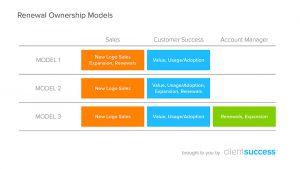A report by Deloitte discovered that 88% of employees aren’t passionate about their work. Does that depress anyone else? As a manager, leader, mom, and friend to a lot of smart up and comers, I worry sometimes about how engaged they are, which parts of their disengagement might be my fault and, of course, how I can fix it.
So what’s the next step an employer might take? Google ‘employee satisfaction’ and fall into a rabbit hole of engagement solutions? For example, 76% of employees want opportunities for career growth, 69% of employees believe they would work harder if their efforts were appreciated, and 61% of employees say doing philanthropic work improves their overall wellness leading to better work outcomes. Now, you’re probably worrying about how you are going to create a CSR program and whether you can afford to start a rewards and recognition plan.
But, before you get your brain all twisted in a knot over which incentives to implement first, use the following approaches to try and build engagement organically. Let’s explore what you can do with the tools, budget and time you already have, before creating even more work for you.
Step 1: Assess your employees’ work values
Before you even think about hiring a new employee, assess the candidate’s personality to identify workplace values and gain a better understanding of where you need to stand as a manager to this specific candidate.
This doesn’t mean managers need to hold every employee’s hand or cater to every employee need; but let’s say this potential employee doesn’t value leadership opportunity so much, but loves volunteering and receiving frequent feedback. Both of these are simple implementations for a manager if enough employees value it as well.
To do: Assess your employees and ask them to identify their top four characteristics or values they would like to see implemented into their work environment. Gather the results, review your budget and implement the highest value. Not only will this give you as a manager an opportunity to know your employees a little more, but you can mold your workplace into a more comfortable place according to the results you receive (within reason).
Step 2: Assign a mentor to new hires
Assigning a mentor to new hires is another budget-friendly way to gain insight into what employees need from you that they might not feel comfortable approaching upper management with right off the bat. Mentors can help guide new employees through different roles and departments fitting that individual best. After all, 25% of employees would be more satisfied with their job if they were assigned to do what they do best.
Perhaps your new hire starts out in one department, but after going through the training and first few months of interacting with other departments, realizes they could contribute more elsewhere in the company. Having a mentor to go to and discuss these thoughts can help employees obtain placement where they see fit. A mentor can watch the employee grow, or struggle, in these departments and offer placement suggestions or tips to improve performance if they think the employee could excel in other areas with a few adjustments.
To do: Start by assigning new hires with a mentor who has been around the company for quite some time, is open to leadership opportunities and works similarly to the new hire based on their work values. Once the two have paired up, require a monthly meeting between the mentor and new employee to touch base on what has worked in the past month, address concerns from both parties and see what adjustments can be made to better achieve results and overall job satisfaction. Doing this will give the new hire the guidance they need and the mentor the leadership role they desire.
As a manager, I can’t create the rules of a mentor-mentee relationship, but I can lay the parameters out ahead of time and tell each person what I’d like them to get out the relationship. As a leader, providing a mentorship program for my people is an easy way to help them get better every day.
Step 3: Recognize a job well done
I have a confession to make. Early on in my journey to become the world’s best leader, I said thank you to my employees every day. Whether they did a good job or not, whether they were helpful or not, whether I was swimming in work they’d left uncompleted after slamming their laptop shut at precisely 4:00pm…or not.
Do I sound bitter to you? If so, I likely sounded pretty bitter to them too. While I was practicing gratitude, it was given to everyone, whether they stayed late and gave 100% or were warming a chair for 8 hours on my dime.
While Globoforce found that 55% of workers would leave their current job for a company that recognizes its employees’ efforts and contributions, the key point here is recognition. It’s far easier to blanket every employee with a thank you, rather than graciously thanking those and recognizing people who genuinely deserve it. Recognition is a powerful motivator for employees, but only if wielded wisely. Done wrong, it can embitter managers, frustrate high performers and reinforce low performance from chair warmers.
To do: Implement a form of microfeedback in your organization. Whether it’s every day, every week or once a month, give your people feedback in the form of quick messages, constructive KPIs or goals to hit and the opportunity to offer their own feedback. Building a feedback loop in your organization rewards recognition, the right way.
Discovering job satisfaction within your organization starts with assessing your workforce. Not everyone is going to have identical workplace needs; but once those are identified, implementation comes a lot easier.
Business & Finance Articles on Business 2 Community(71)
Report Post








